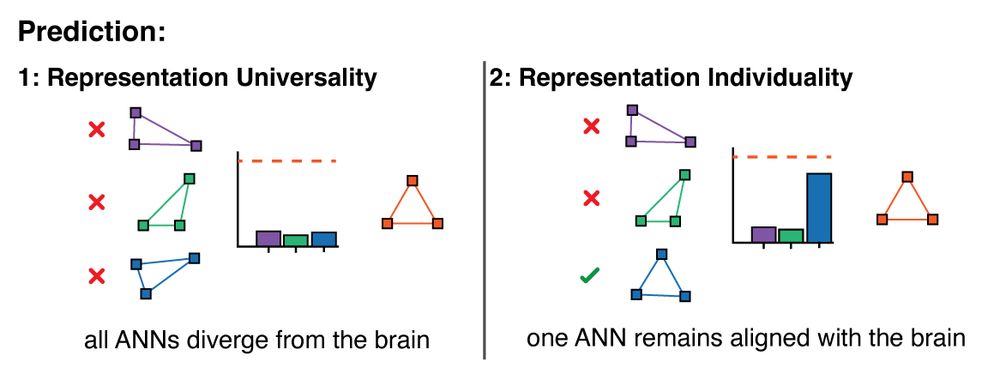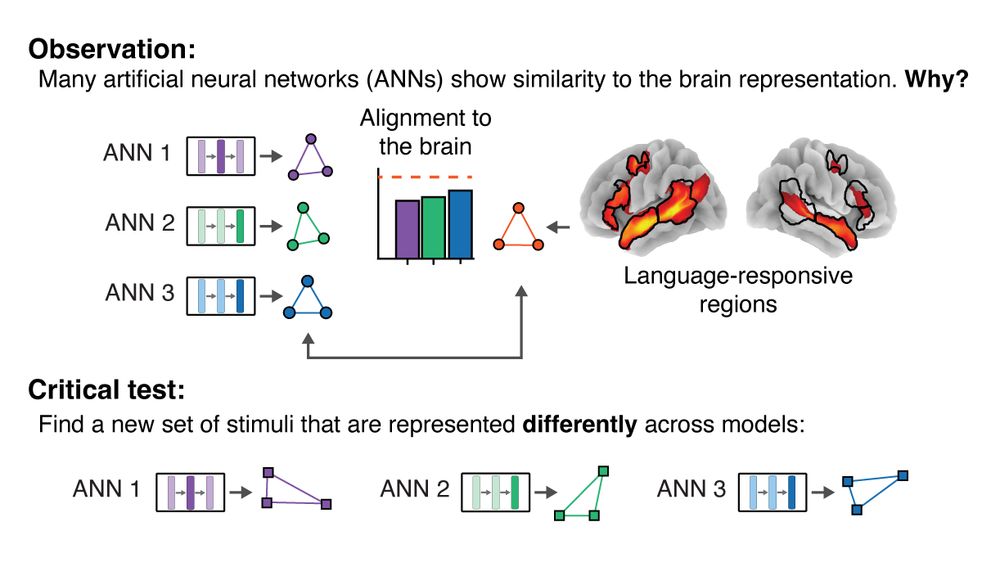eghbalhosseini.github.io
𝗔. Language: perceived frequency and meaning generality decrease from high-agreement to low-agreement stimuli.
𝗕. Vision: valence and clutter increase, while aesthetics decreases. (11/n)

𝗔. Language: perceived frequency and meaning generality decrease from high-agreement to low-agreement stimuli.
𝗕. Vision: valence and clutter increase, while aesthetics decreases. (11/n)
We also tested universality from brains to ANNs in the visual domain:
𝗔. High-agreement stimuli across brains also showed higher ANN agreement and alignment.
𝗕. Low-agreement stimuli led to substantially worse ANN-to-brain alignment. (9/n)

We also tested universality from brains to ANNs in the visual domain:
𝗔. High-agreement stimuli across brains also showed higher ANN agreement and alignment.
𝗕. Low-agreement stimuli led to substantially worse ANN-to-brain alignment. (9/n)
We tested this in language (𝗔) and vision (𝗕) with 3 stimulus sets: high-agreement, random, and low-agreement.
Higher agreement led to stronger ANN-to-brain alignment, thus modulating agreement directly impacts brain alignment, supporting representation universality. (8/n)

We tested this in language (𝗔) and vision (𝗕) with 3 stimulus sets: high-agreement, random, and low-agreement.
Higher agreement led to stronger ANN-to-brain alignment, thus modulating agreement directly impacts brain alignment, supporting representation universality. (8/n)
𝗔. Low-agreement stimuli robustly reduced ANN agreement compared to previous stimuli.
𝗕. When ANNs disagree, their representations are less predictive of fMRI responses, supporting representation universality and the link between model agreement and brain alignment. (6/n)

𝗔. Low-agreement stimuli robustly reduced ANN agreement compared to previous stimuli.
𝗕. When ANNs disagree, their representations are less predictive of fMRI responses, supporting representation universality and the link between model agreement and brain alignment. (6/n)
Our question: how does reducing agreement across ANNs affect their alignment with the brain? We tested this in language. (5/n)

Our question: how does reducing agreement across ANNs affect their alignment with the brain? We tested this in language. (5/n)
1. If ANNs share similar brain-like representations, separating them would also distance their representations from the 🧠.
2. If some ANNs are inherently better models, separation will highlight these, keeping the best aligned with the 🧠.(4/n)

1. If ANNs share similar brain-like representations, separating them would also distance their representations from the 🧠.
2. If some ANNs are inherently better models, separation will highlight these, keeping the best aligned with the 🧠.(4/n)


